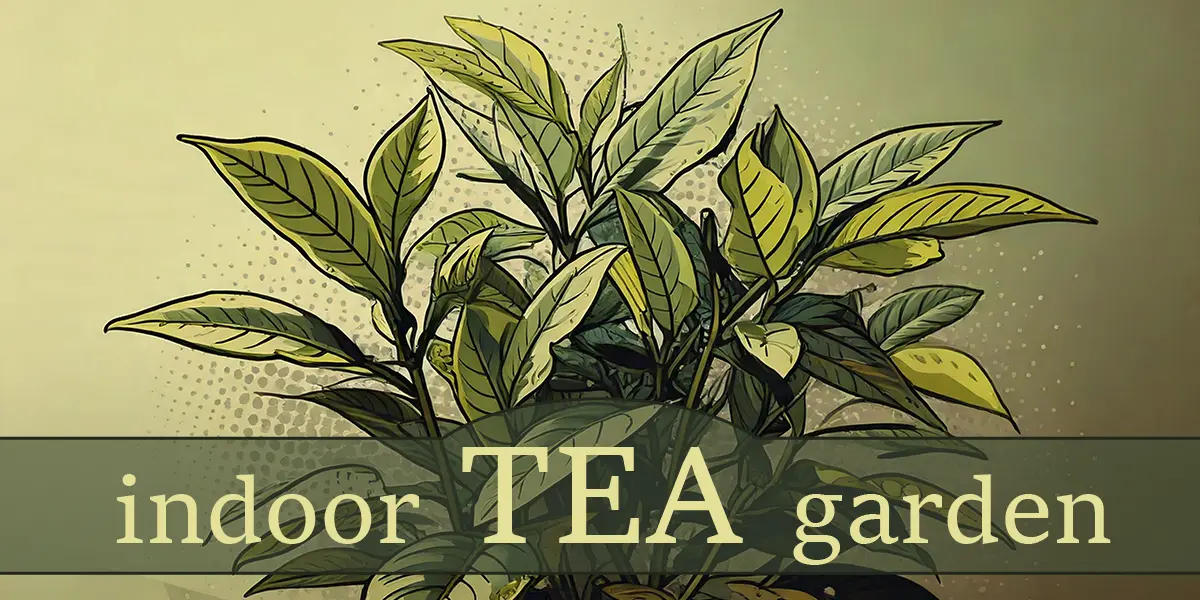Did you know that you can grow your own beverage plants? Coffee’s a challenge in California, but tea gardens are becoming a thing (and not just another fad). You can grow herbs and teas in your flower bed, containers, or even indoors with the right conditions and equipment.
In this blog, we’ll tell you how. Don’t fret if you’re limited on outdoor space. Grab a few pots and plants, pick a sunny spot by a window, and follow our guidelines to start the process.
Camellia Sinensis: the Main Show
Camellia Sinensis is an evergreen shrub whose leaves and leaf buds are the source of tea.
Originating in East Asia, this plant provides the raw material for various teas, including green, black, white, oolong, and pu-erh fermented tea.
The main varieties are Chinese Tea and Assam Tea. Their differences are significant but not enough to classify them as separate species.
Chinese Tea (Camellia Sinensis var. sinensis)
- Thrives in various regions of China.
- The leaves are generally smaller and more delicate than Assam Tea.
- Chinese Tea plants are more resistant to cold temperatures.
- The tea produced from these leaves ranges from light and floral to rich and robust, depending on the processing method.
- These plants tend to have a longer lifespan, with some tea trees living for several hundred years. That’s older than the mayonnaise in your fridge.
- Chinese Tea is the source of many types of tea, including popular variants like green tea, white tea, and lightly fermented oolong tea.

Chinese Tea leaves can be processed in various ways for various flavors.
Assam Tea (Camellia Sinensis var. assamica)
- Assam Tea is primarily grown in the northeastern Assam region of India.
- The leaves are larger and thicker than Chinese Tea.
- Assam Tea plants thrive in warmer climates and high humidity.
- The tea produced from Assam leaves tends to have a malty, robust flavor, often described as full-bodied.
- Assam Tea is predominantly used in making strong black teas, including many breakfast blends.
- These plants are typically more vigorous but have a shorter lifespan than Chinese Tea varieties.
- Assam Tea is a primary component in spiced teas like chai due to its strong flavor profile.
How to Grow Tea Indoors
Soil
- Tea plants prefer slightly acidic soil with a pH between 5.5 and 6.5.
- Use a well-draining potting mix, ideally designed for acid-loving plants like azaleas or camellias.
- Ensure the pot has drainage holes to prevent pooling.
Container
- Choose a 12-inch diameter pot or larger to provide enough room for root growth.
- Consider using a clay or terracotta pot, which allows the soil to breathe and helps regulate moisture.
Light
- Place the pot in a location where it receives at least 6–8 hours of indirect sunlight daily.
- If natural light is low, use a grow light to supplement. We recommend LED grow lights.
Temperature & Humidity
- Tea plants thrive in temperatures between 60-85°F (15-29°C).
- Maintain indoor humidity levels at around 50-70%. You can use a humidifier or place a humidity tray near the plant.
Watering
- Keep the soil moist but not saturated. Water the plant when the top inch of soil feels dry.
- Use room temperature water to avoid shocking the plant roots.
Feeding
- Fertilize your tea plant every 4–6 weeks during the growing season (spring and summer).
- Use a balanced, water-soluble fertilizer or one formulated for acid-loving plants.
Pest & Disease Control
- Watch for common pests like aphids, scale, and spider mites. Treat any infestations immediately.
- Watch for diseases like root rot or powdery mildew. Ensure proper drainage and avoid overwatering to prevent these issues.
Pruning & Maintenance
- Regularly prune the tea plant to promote bushier growth and maintain its shape.
- Remove any dead or yellowing leaves to keep the plant healthy.
Harvesting & Processing
- Tea plants can take 3–4 years to mature.
- Use small scissors or hand pluck the tips of new growth for harvesting.
- Process the leaves according to your desired tea type (e.g., lightly steamed for green tea, fully fermented for black tea).
- Dry the leaves thoroughly before storing or using them.
Our Favorite Herb Teas
So what if caffeine makes you jittery? Or you’re more of a peppermint person?
You’ll be happy to know herb teas are even easier to grow indoors than the “real” teas. They make pretty houseplants, too!
Mint
- Mint is a hardy, fast-growing herb that prefers partial shade and moist soil.
- Plant mint in a separate pot as it spreads quickly and can become invasive if grown with other herbs.
- Add fresh mint leaves to hot water for a refreshing tea, or use them in iced tea or cocktails.
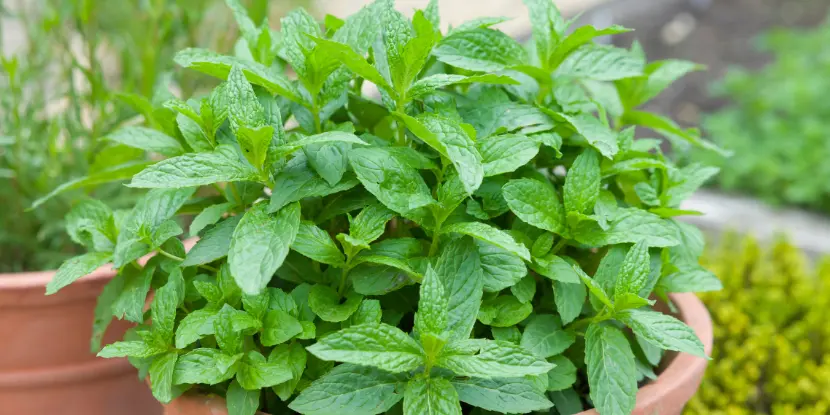
A healthy young potted mint plant.
Lemon Balm
- Lemon balm is a fragrant herb that grows well indoors. It prefers plenty of sunlight and well-draining soil.
- Use the lemon-scented leaves for making herbal teas or infusions. Lemon balm has a calming effect and is often used to alleviate stress and anxiety.
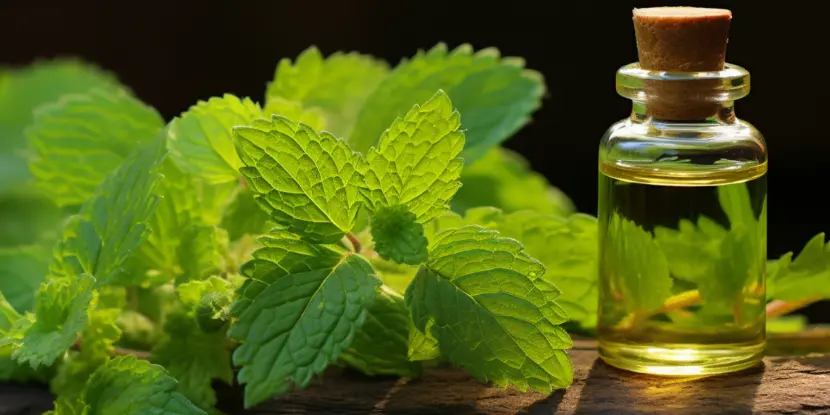
Use the lemon-scented leaves of lemon balm for herbal teas or infusions.
Chamomile
- Chamomile is a delicate plant that requires plenty of sunlight and well-draining soil.
- Use the dried flowers to make a soothing herbal tea with sleep-inducing properties.
- We recommend growing German Chamomile, which is well-suited for smaller planters.
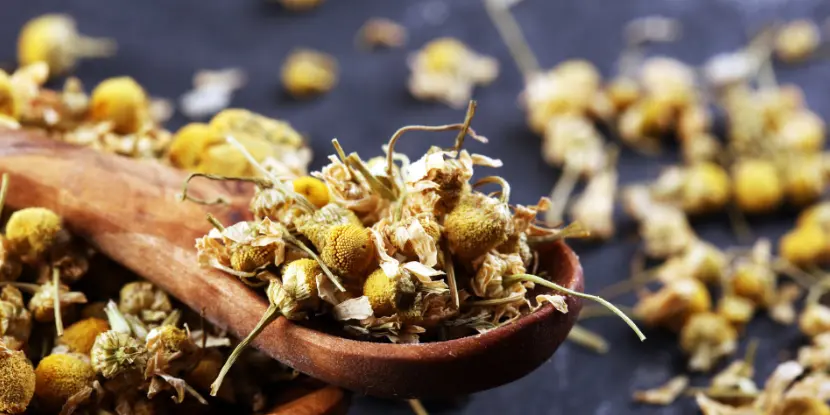
The dried pistils of chamomile flowers make a relaxing tea.
Lavender
- Lavender is a beautiful aromatic herb that grows well indoors with plenty of sunlight and well-draining soil.
- Use the fragrant purple flowers to make a calming herbal tea or add them to baked goods for a floral flavor. Lavender has also been known to aid in digestion and promote relaxation.
- Pair it with lemon balm and honey for a delicious combination!

Lavender flowers make a fragrant and calming herbal tea.
Echinacea
- Echinacea is a tough and hardy herb that prefers plenty of sunlight and well-draining soil.
- Use the dried roots, leaves, or flowers to make an immune-boosting herbal tea. It’s also often included in natural cold remedies.
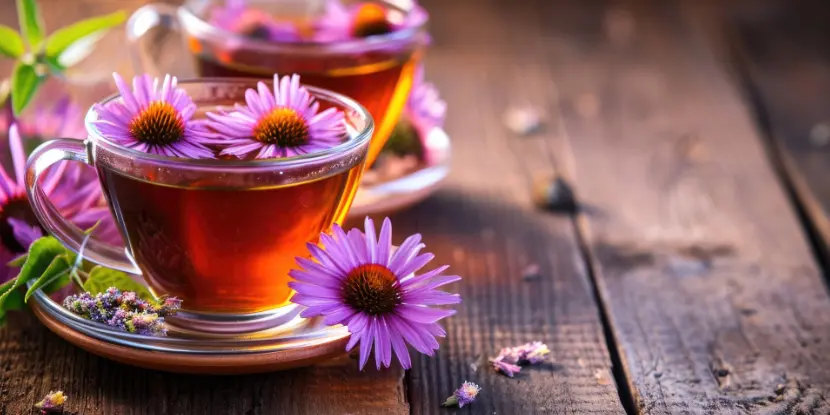
Clear up that cold with a hot cup of soothing echinacea tea.
Lemongrass
- Lemongrass prefers a warm, sunny location and well-draining soil.
- It has a fresh, lemony flavor with hints of ginger, making for a refreshing tea. Lemongrass tea is renowned for its digestive benefits and ability to relieve colds and fever.

Lemongrass makes a fresh, lemony tea with hints of ginger. And you don’t have to mow it on weekends!
Lemon Balm
- Lemon balm is a fragrant herb that grows well indoors. It needs plenty of sunlight and well-draining soil.
- Use the lemon-scented leaves for making herbal teas or infusions. Lemon balm has a calming effect and is often used to alleviate anxiety and lower blood pressure.
- Pair it with most other herbs to create unique-tasting flavor varieties.
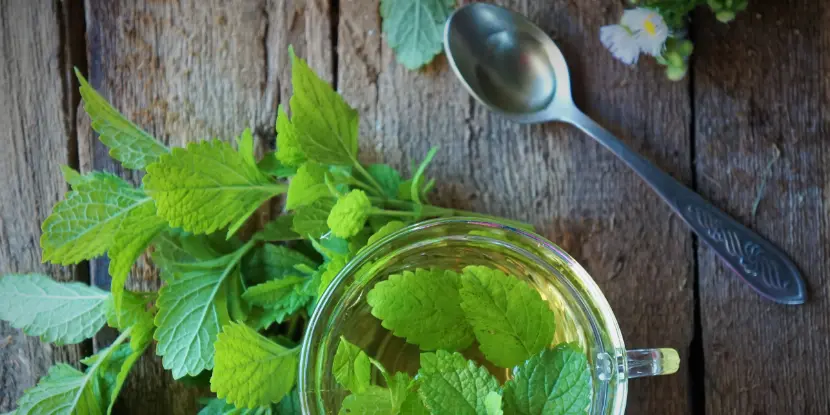
Lemon balm tea helps alleviate anxiety and lower blood pressure.
Rosemary
- Rosemary is a robust herb that thrives in well-draining soil and full sunlight.
- The pine-like scent and flavor of rosemary make it a great addition to teas, lending a savory note. It’s also known for its antioxidant properties and can aid in digestion.

Rosemary is a valuable cooking herb that can add zest to herbal teas.
Stevia
- Stevia is a natural sweetener that loves a warm climate and well-draining soil.
- The leaves can sweeten herbal teas naturally as a calorie-free alternative to sugar.
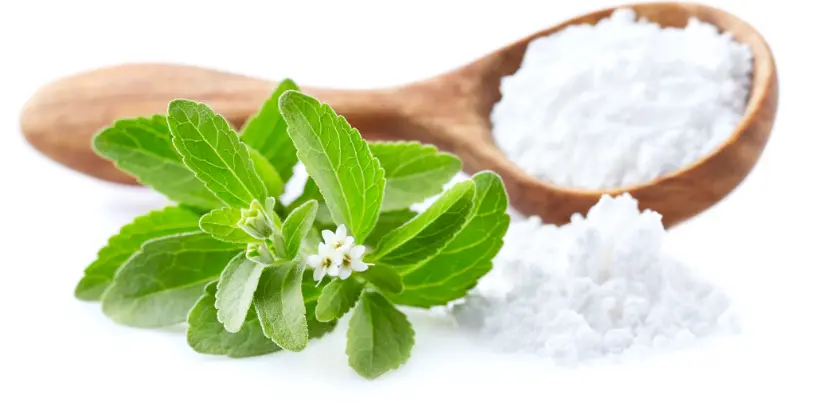
The stevia plant is a natural, no-calorie sweetener.
Growing & Caring for Herb Tea Plants
Container
- Select pots with suitable drainage holes to prevent waterlogging.
- A 6–12 inch diameter pot is ideal for most herb tea plants.
Soil
- Use well-draining potting soil, ideally formulated for herbs or indoor plants.
- Ensure the soil is slightly acidic to neutral for optimal growth.
Light
- Place pots in a location that receives 6–8 hours of sunlight daily.
- Supplement with LED grow lights if natural light is insufficient.
Temperature
- Keep the indoor temperature between 60-75°F (15-24°C).
- Avoid placing plants near drafts or temperature extremes.
Humidity
- Maintain humidity levels around 40-50% for most herbs.
- Use a humidifier or place a humidity tray near the plants if necessary.
Watering
- Keep the soil consistently moist but not saturated.
- Apply room temperature water when the top inch of soil feels dry.
Feeding
- Fertilize plants with a balanced, water-soluble fertilizer every 4–6 weeks during the growing season.
- Reduce fertilization frequency during the winter months.
Pest & Disease Control
- Inspect plants often for pests like aphids or spider mites. Use organic insecticidal soap or neem oil to treat any infestations promptly.
- Watch for diseases like powdery mildew and treat with a fungicide. To prevent these issues, ensure proper air circulation and avoid overwatering.
Pruning & Harvesting
- Regularly prune herbs to encourage bushy growth and remove dead or yellowing leaves.
- Harvest leaves and flowers as needed, but avoid taking over one-third of the plant.
Repotting
- Repot plants when they outgrow their containers, typically every 1–2 years.
- Choose a slightly larger pot and refresh the soil during repotting.
We hope you enjoyed our guide to growing a tea garden! For more tips and tricks on gardening, follow us on Instagram and like us on Facebook.
FAQs: Growing an Indoor Tea Garden
Q: How often should I water my indoor tea plants?
That depends on the plants you’re growing, but generally, you should keep the soil moist but not soggy. Water your plants when the top inch of soil feels dry. Check each plant’s needs since some herbs might require more or less frequent watering.
Q: Can I grow tea plants without natural sunlight?
Yes, by using LED grow lights. Place the pots in a location that receives 6-8 hours of light daily, and supplement with grow lights if natural light is lacking. Place the grow lights at an appropriate distance from the plants to prevent overheating and provide the optimal spectrum for photosynthesis.
Q: How do I prevent pests from infesting my indoor tea garden?
Regularly inspect your plants for signs of insects like aphids or spider mites. Use organic insecticidal soap or neem oil to treat any infestations promptly. Ensure proper air circulation and avoid overwatering.
Q: What type of soil is best for growing tea herbs indoors?
Use well-draining potting soil formulated for herbs or indoor plants. The soil should be slightly acidic to neutral for most herb tea plants. Regularly refresh the soil to provide essential nutrients.
Q: Can I grow multiple herbs in the same container?
Yes, if they have similar light, water, and soil requirements. Make sure the container is large enough to accommodate the growth of all the plants and has good drainage.
Q: How do I know when to repot my tea plants?
Repot your tea plants when they outgrow their containers, typically every 1–2 years. Signs that a plant needs repotting include roots growing out of the drainage holes or visibly appearing on the soil surface, drying out more quickly between waterings, or stunted growth.
Q: Is growing an indoor tea garden in a small apartment possible?
With the right containers, well-draining soil, and adequate light (natural or supplemented with LED grow lights), you can grow an indoor tea garden even in a mousehole apartment. Consider vertical gardening or using shelves to maximize space.
Q: How should I harvest and store my herbs for the best flavor?
Harvest herbs in the morning. Use sharp scissors or pruners to snip the leaves or flowers. Store fresh herbs in a cool, dry place, or dry them by hanging bundles in a well-ventilated area away from direct sunlight. Once dried, store herbs in airtight containers to retain their potency.

